Chris Cheung has been here before—too many times to count; and while I’ve visited New York City’s Chinatown on many occasions as well, I’d venture to guess that he’s got me beaten by more than a few visits. Here, at the corner of Canal and Mott Streets, I soak in the scene before us: women, zoned-in, digging through mandarin oranges at a sidewalk stall, vendors hawking seasonal accessories—knit hats, gloves and scarves. I like the vibrancy, that dense cacophony of street life. Cheung, on the other hand, is preoccupied by something else. It is the past that has his attention.
A contestant on The Food Network Challenge and Knife Fight, a judge on Chopped and the chef/owner of East Wind Snack Shop in Brooklyn—Cheung, who is 46 but looks ten years younger, walks at a deliberate pace. He takes me down Mott Street. It’s sunny and mild—a reprieve from recent cold and snow. Looking around, Cheung tells me that things have changed. He misses the Chinatown of his youth, a time when Toisanese food in Chinatown—long predating the availability of other regional fare like Shanghainese, Sichuanese and Xi’anese—was plentiful, and Toisanese coffee shops, a prime source of food memories for him, were commonplace.
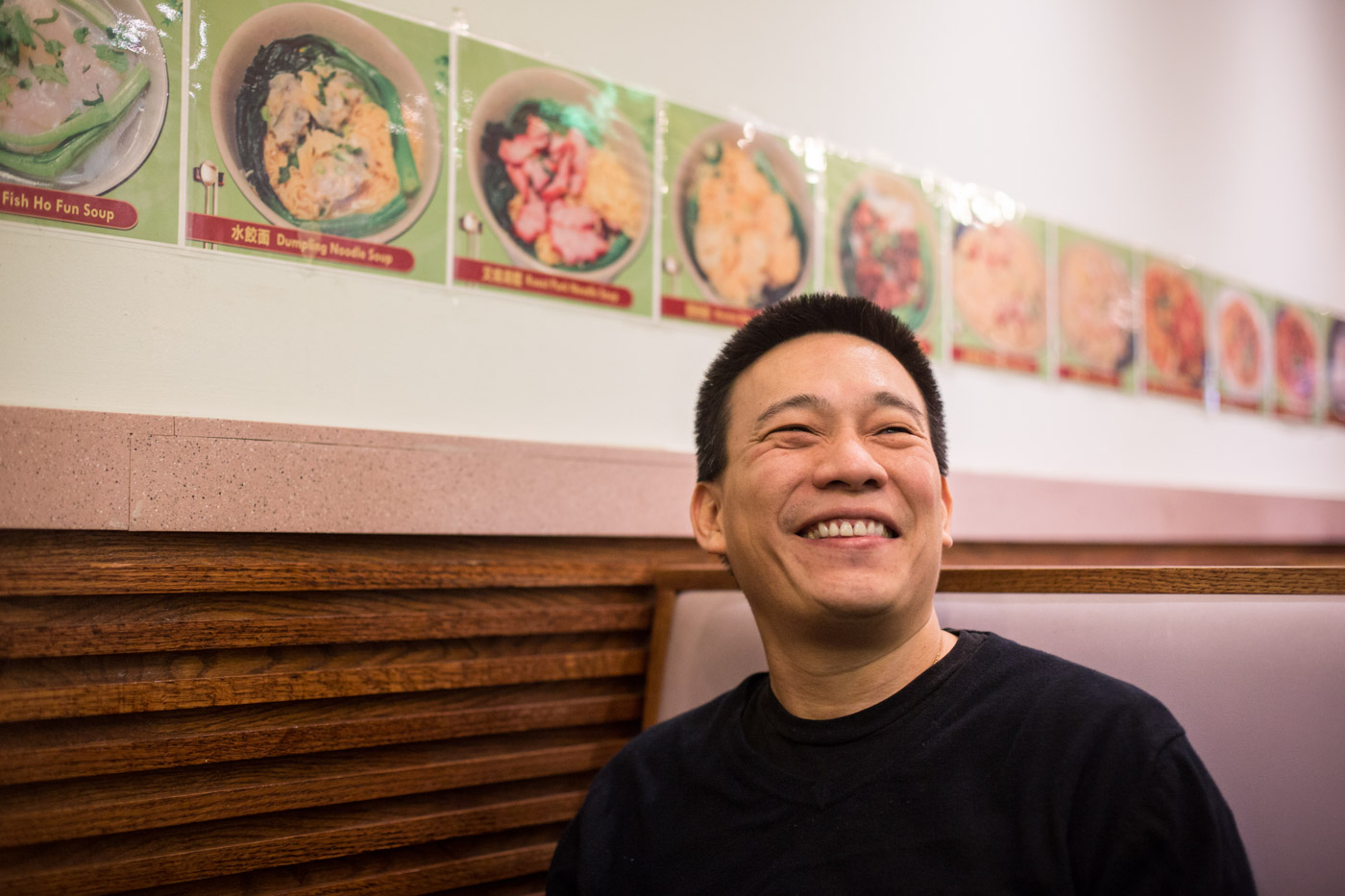
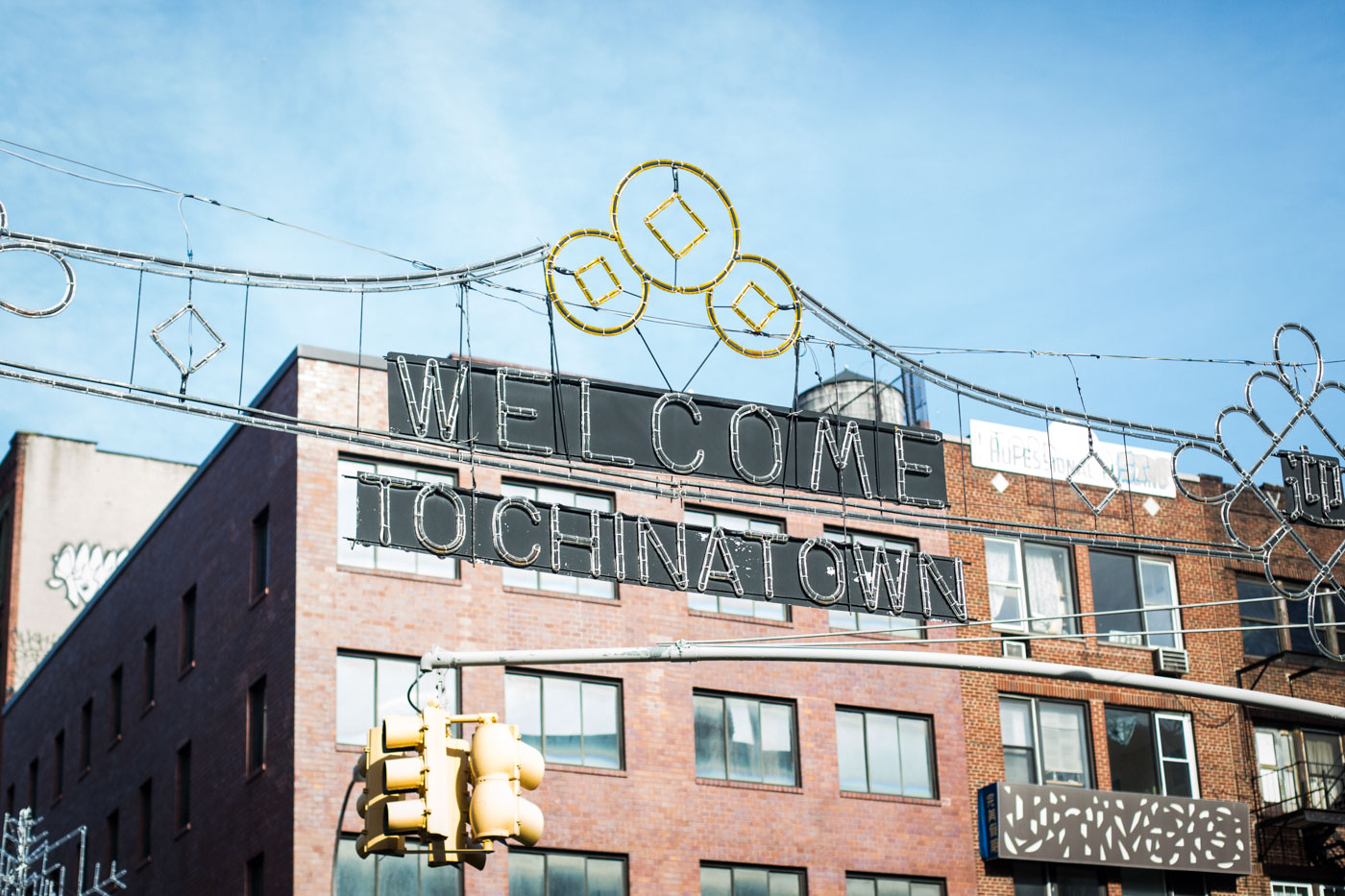
Toisanese himself, Cheung lived in Brooklyn with his mother, but would frequently spend time at his grandmother’s on Mott Street. “That’s my grandmother’s building over there,” he says, pointing to a nondescript door that, as we step inside briefly, leads to a vestibule with metallic gray, period mailboxes.
As a boy, Cheung played with neighborhood kids in a courtyard between this building and another behind it. It was a confined area, but to him it was an unrestricted play land. In that more carefree era, a young Cheung of only 11 or 12 would hang out with friends at all hours, sometimes even past midnight.
Cheung and his friends were fueled by good food, and his habit of eating out began during those years. “We’d get a lot of different things: ha gow (shrimp dumplings) and noodles, meat on rice, and things like that––very cheap. We called them, ‘orders.’ [We’d ask], ‘What order are you getting?’”
Often, these “orders” were placed to go; in a classic Chinese takeout pail, the “meat on rice” (a protein and sauce––and a vegetable too, despite the moniker) was served one on top of the other and wedged into a single box. And Cheung would find these dishes at Toisanese coffee shops.
“The Toisanese coffee shops that were popular in the 70s and 80s were not tourist-driven,” Cheung explains in a resonating Brooklyn baritone. “They were there to feed the working class of Chinatown. There was a dedication to the food…not so you could get into the paper, not so you could get reviewed or for the chef to be better known. You got up at three in the morning to make the dumplings because you needed to be able to do business. And the byproduct was that it made the food better. There were no shortcuts back then.”
Seeking better lives, the Toisanese—from a rural, coastal county in Guangdong Province in Southern China—had arrived in the United States as the first Chinese to come to this country. They panned for gold as 49ers during the Gold Rush in California, and performed the back breaking labor to build the Transcontinental Railroad in the Western states. Once they had migrated across the country, they founded the Chinatowns in America’s major cities in the 19th Century—New York’s included.
The Toisanese dialect was the lingua franca in each of those Chinatowns, and Toisanese food was, from the 19th until the latter part of the 20th century, synonymous with Chinese food itself. When modified to appeal to the American palate, it gave rise to Chinese-American food—from egg rolls to chop suey and egg foo young. And while food of this kind wasn’t absent from restaurants in New York’s Chinatown, it was authentic Toisanese staples served by Toisanese-owned shops to Toisanese customers that was its heartbeat.
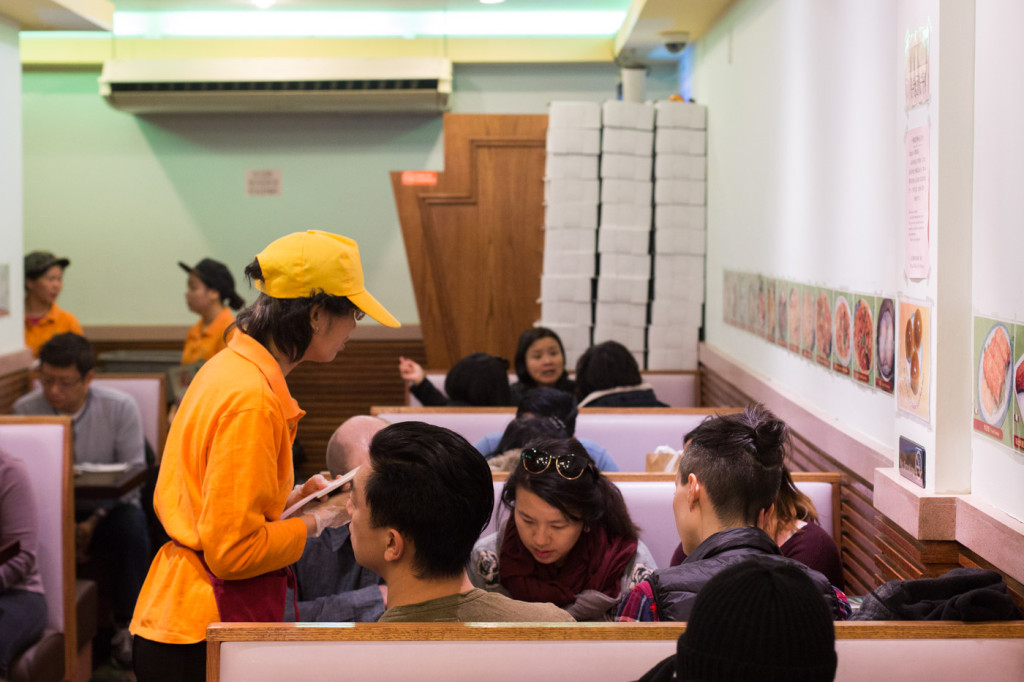
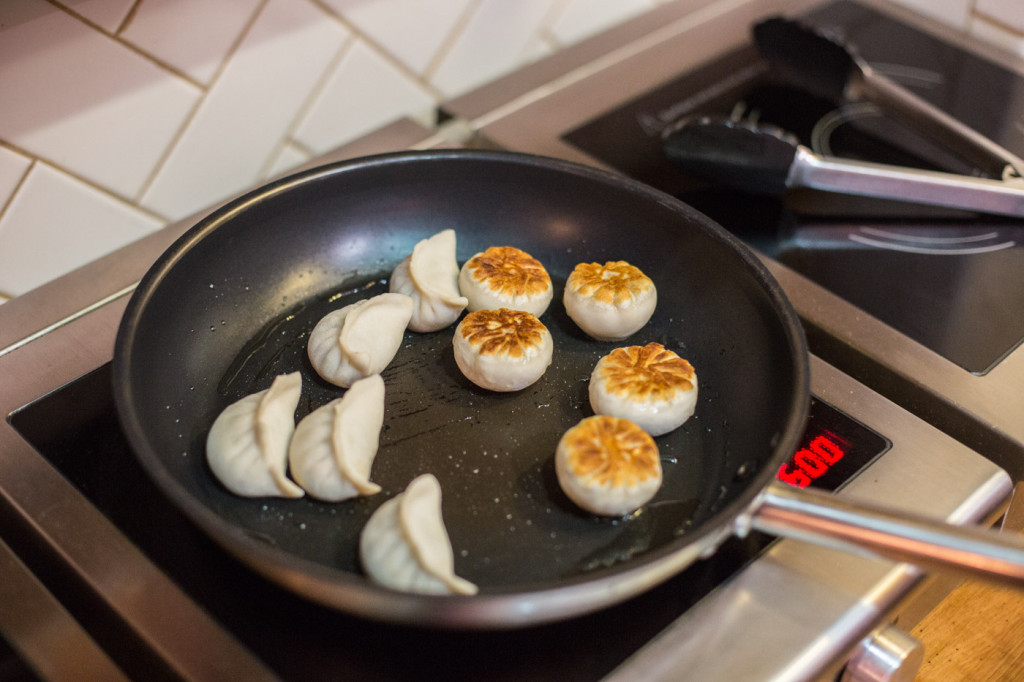
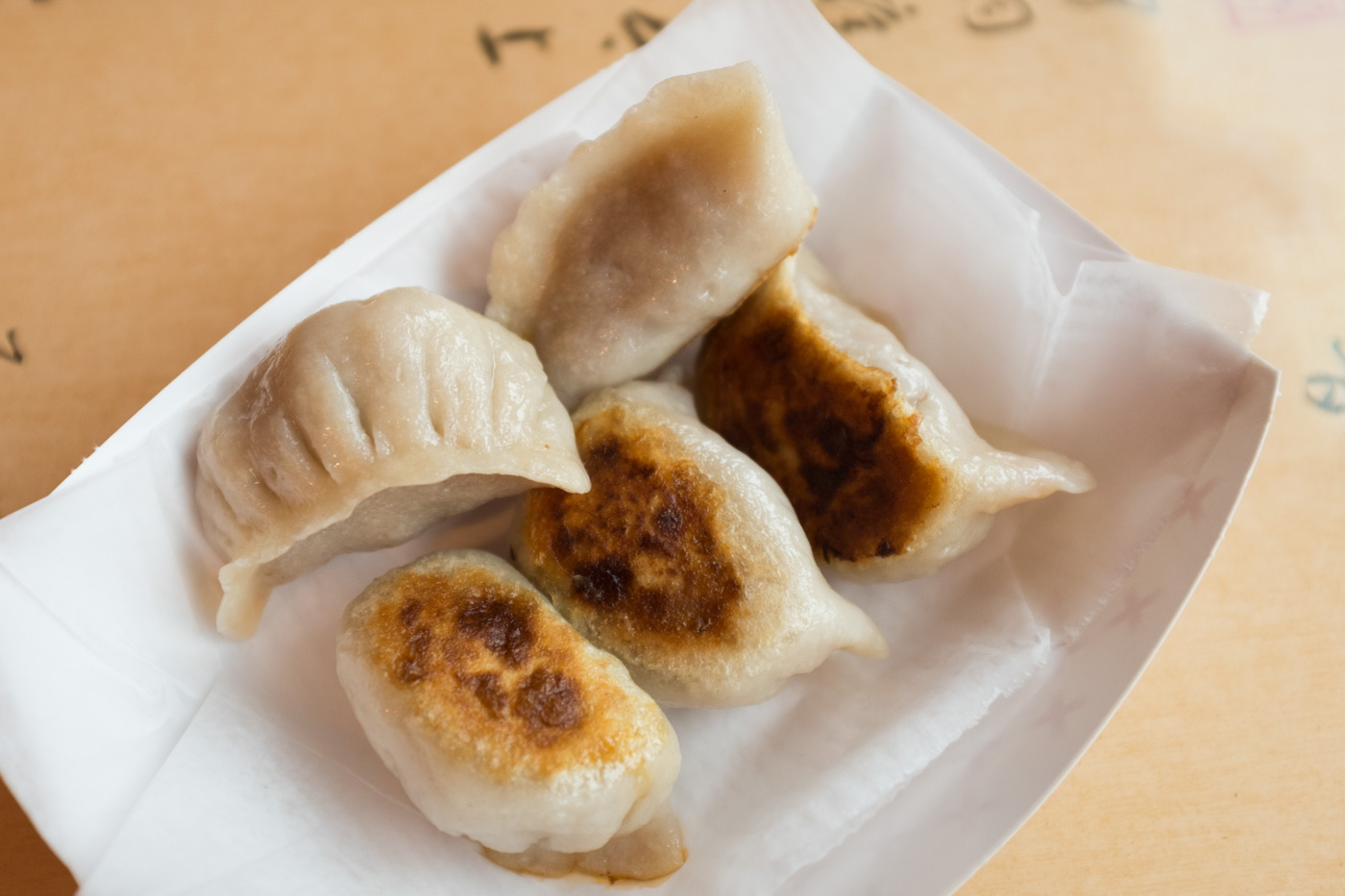
It wasn’t until the immigration patterns changed beginning in the 1960s—first with an influx of Hong Kongers speaking Cantonese and blending in with the Toisanese in Chinatown’s historic core, and then with people from other parts of China––namely the Fukienese who settled east of The Bowery during the 90s and beyond—that the linguistic and culinary makeup of New York’s Chinatown began to diversify.
Cheung, eager to show me some vestige of the past, takes me to Mei Lei Wah, an institution on Bayard Street where he’s eaten since he was a boy. Inside, it’s bustling. Against the back wall behind the counter are two worn stainless steel cases. One is glass paneled; customers peer through condensation, eyeing choices that look like lumps of snow on a foggy morning—gai baos (chicken buns), dai baos (chicken, pork and salted egg buns) and jing char sui baos (steamed roast pork buns). Another case, panel-less and exposed, houses baked items, mostly gook char sui baos (baked roast pork buns)–– boldly tanned from baking––for which the shop is especially known.
The staff speaks in Cantonese and Toisanese, and moves left and right to fill requests, opening and closing the glass panel doors as they negotiate the tight space, keeping an ear out for takeout customers blurting bao orders. It’s a tangle of turns and a matter of who speaks the loudest. At our table, the pace is slower even though the small dining room is filled to capacity.
We sample two versions of roast pork buns that Cheung ordered; the baked and the steamed. The former, Mei Lei Wah’s signature item, oozes a rich filling. “It’s a brioche type bread,” Cheung says of the soft, golden bun that encases the meat. Taking another bite, he observes, “I taste a hint of butter,” and he handles the surface of the steamed bao, looking for the typical separation where the bread bulges to release pent up heat like a flowering bulb. The content isn’t overly sauced or unnaturally bolstered by food coloring. They’re a treat, and Cheung––enjoying the moment––is pleased.
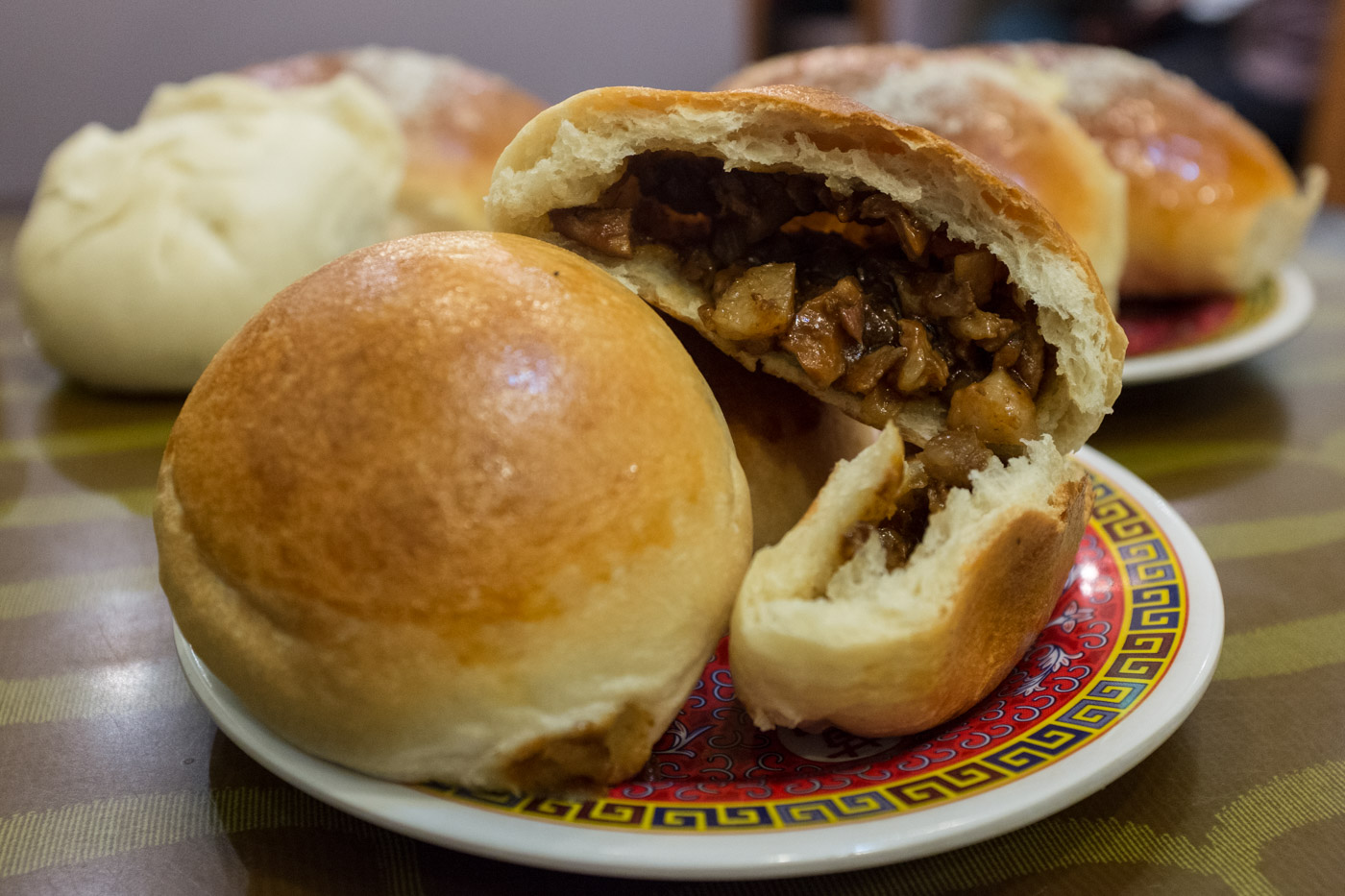
—
When I later stop by Cheung’s East Wind Snack Shop––an intimate 360 square foot shop located in the Windsor Terrace section of Brooklyn––it is a weekday, and I sit on a stool in front of the tiny open kitchen. I find Cheung maneuvering in a nook that can only comfortably accommodate one person, and despite that his back is facing me, he notices and greets me. He’s mid-preparation of a “gwaco,” his take on the famous “gua baos”–– a pork belly bun made popular by David Chang and Eddie Huang.
In highlighting quick meals, and in his decision not to call it a “restaurant,” but rather a “snack shop”––a reference to a term once applied to some of those old coffee shops––Cheung is committed to capturing a nostalgic feeling at East Wind. “I wanted to do an ode to those coffee shops I grew up with in Chinatown,” Cheung explains.
Now Cheung holds a bao, which he’s pulled quickly from a steamer pot to his right. The bao is characteristically white but shaped like a discus rather than the more familiar clam-shaped iteration. Decrying the frozen baos sold in supermarkets, Cheung explains, “I steam my baos from scratch, proof the dough with yeast every single day.” He offers one to me; it’s fluffy and airy.
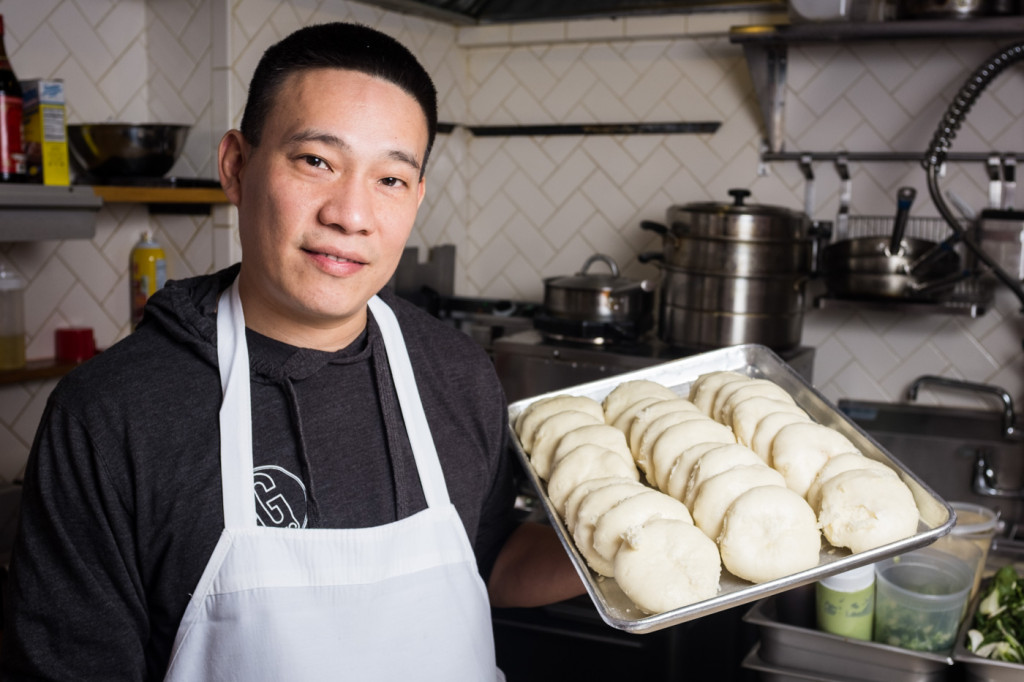
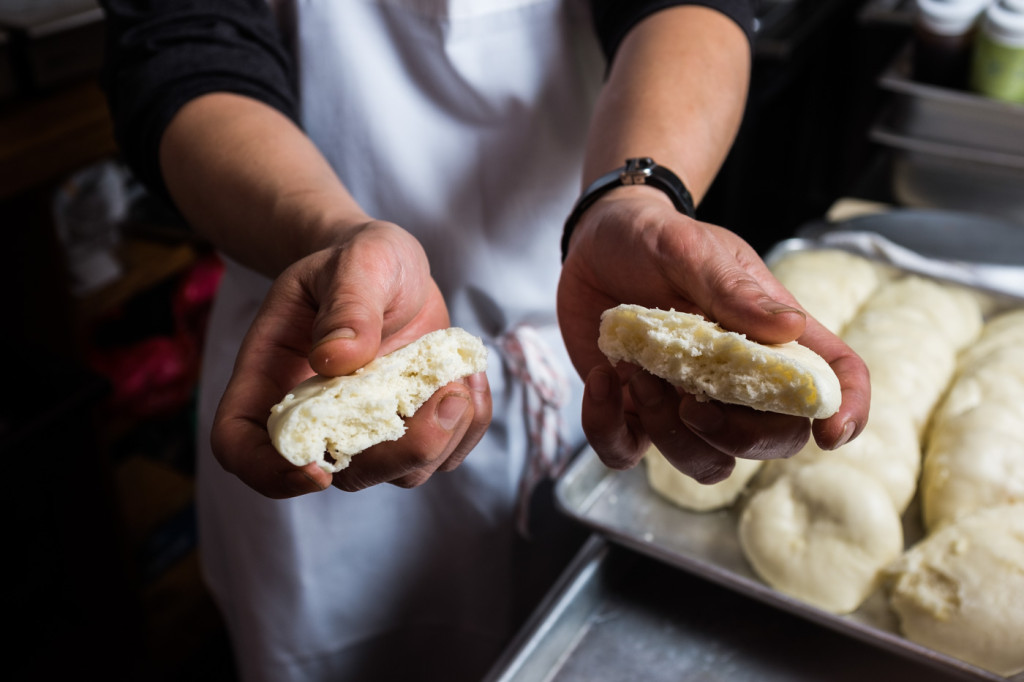
“The dumplings have to have the right flour, the right amount of water, to be kneaded the right amount of time. The quality of the meat has to be checked. It has to be ground and seasoned in house,” Cheung explains.
Customers come in steadily, and Cheung takes a few steps into the dining room where he recognizes a regular. They chit chat amiably about football—Cheung himself is a big sports fan. As the tickets begin to collect, he returns to the kitchen where he starts the process of cooking more pork dumplings, inserting five at a time into one of four frying pans. They’re quickly steamed in a shallow pool of water; the pan is covered with its lid, heated to an optimal temperature and issues a Pavlovian sizzle as it produces a golden brown sear.
Cheung’s uncle had owned a coffee shop in Chinatown back in the 70s, and he learned dumpling making from his uncle’s recipes. “They keep everything close to the vest,” Cheung says about Chinese chefs in general. “They’re very secretive.” In fact, his uncle didn’t feel comfortable sharing until Cheung reassured him that the recipes wouldn’t be shared.
At that point, Cheung was already a chef known for blending Asian flavors. He had become adept at using lux ingredients and cutting edge techniques, with stints as executive chef at Almond Flower Bistro and The Monkey Bar. At the latter, inside the Hotel Elysée in Midtown Manhattan, Cheung continued to pursue food that was new and evolved while offering a full Chinese menu.
Along his path, Cheung was reintroduced to tradition upon meeting an old dim sum master called Mr. Lam, who––perhaps understanding the importance of passing on his knowledge––saw something in Cheung. He was an open book, an encyclopedic storehouse; the old master was highly skilled, and helped Cheung refine what he had learned from his uncle. For Cheung, whose culinary instincts were more modern, this period of unexpected tutelage had helped him find his roots through time-honored techniques.
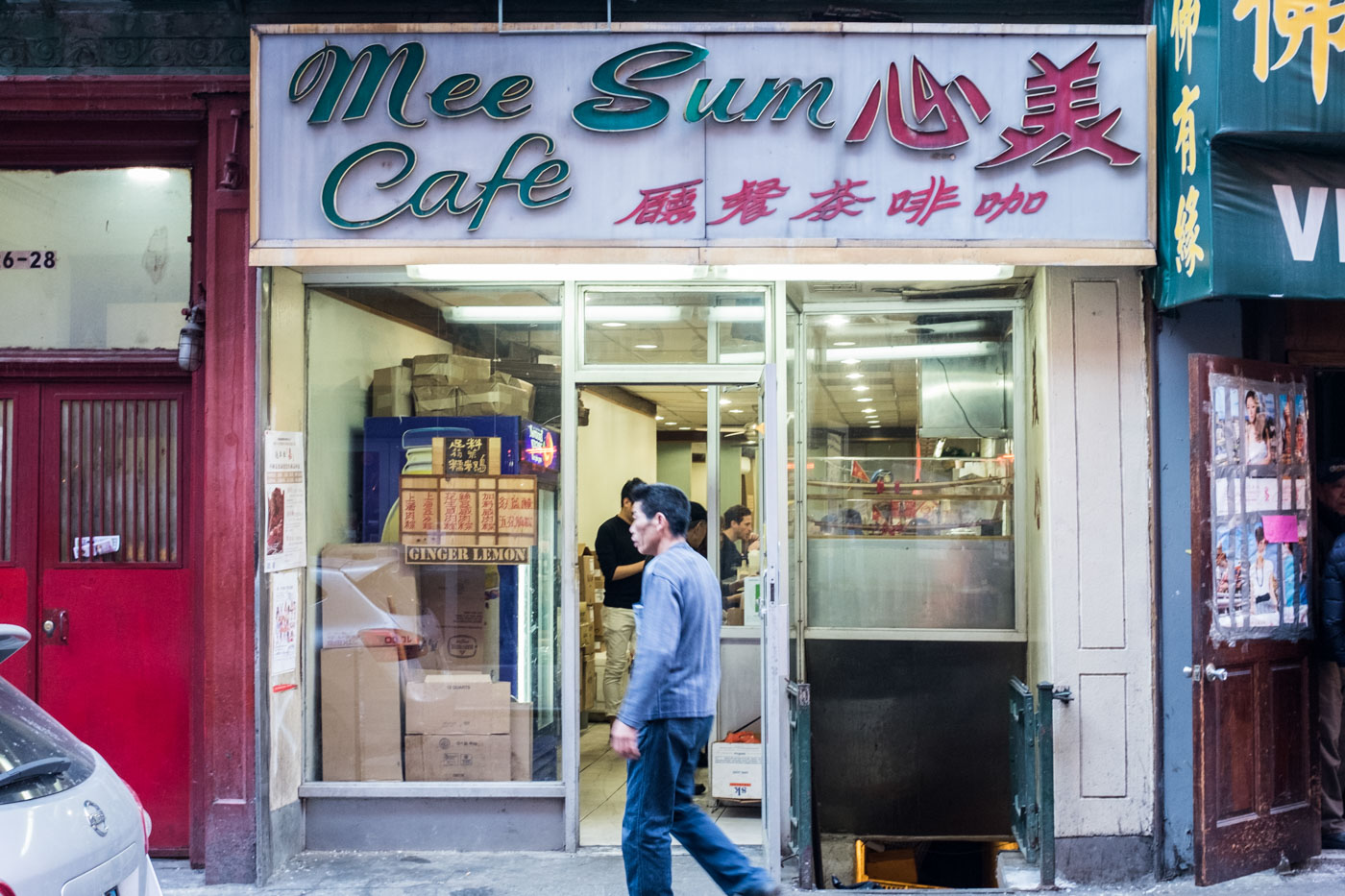
—
Back in Chinatown, apparently Mei Lei Wah isn’t the only holdout from the past. On Pell Street, we find Mee Sum Cafe, one of the last remaining Toisanese coffee shops. It’s narrow with circular, fading padded stools lining its counter. That familiar stainless steel steam case with baos sits alongside a four-legged vintage tea urn—essentially, a museum artifact. Metal coffee decanters with black plastic handles atop discolored burners, resting at the ready, punctuate the set up.
We sit in the dining room where a middle-aged prep cook, donning an apron and speaking Toisanese, has an impromptu work station sprawled across a table. Peeled and semi-peeled fresh water chestnuts are scattered with shells inside of a box. They’re to be chopped and mixed into ground pork to make steamed pork patties, which, incidentally, are what Cheung has on his mind. Another nod to the “orders” of his youth, he chooses the pork patty with salted fish––listed under “rice in box” on the laminated menu.
“When I was growing up, you could get a really great meal of meat on rice with a soda, get change back, and tip for three dollars,” he says. The pork patty today? $4.25—still a head-scratchingly good deal given the intervening years.
The pork is topped with julienned ginger and pieces of salted fish and served on a sizzling oval, single-serving platter. The accompanying rice is single-serving as well, held in a rectangular aluminum takeout box minus the lid—an odd presentation for customers dining in. But that becomes an afterthought once Cheung tastes the pork patty, a dish that flies or fails largely on its mouthfeel and texture. “This is hand chopped, doesn’t go into a grinder, doesn’t go through a food processor,” Cheung says. “This is old style.”
Cheung explains that the arc out of Toisan––a rural backwater––first stretched to the nearby provincial capital of Guangzhou (Canton) and then ended south in Hong Kong. It was the British Crown colony and sophisticated culinary stronghold where Toisanese food and its flavor profiles were absorbed into the more well-known, broader Cantonese style of cooking.
“Toisanese is, for one, a smaller snapshot. Toisan is the countryside. So the food develops more out of comfort food, out of basic necessity––doing what you can from very, very little.” Cheung, finding a comparison in American foodways, explains a parallel to the role of food developed by slaves in shaping what we know as Southern cuisine today.
“It’s definitely more refined,” Cheung says, commenting on Cantonese food. “The Hong Kong style restaurants fry their food a little bit more, probably use a little bit more MSG, serve more seafood––things like that. The old Toisanese coffee shops were more meat-driven, and more meat on rice.” He continues, “Now, it’s all become Hong Kong style. It’s morphed into one style.”
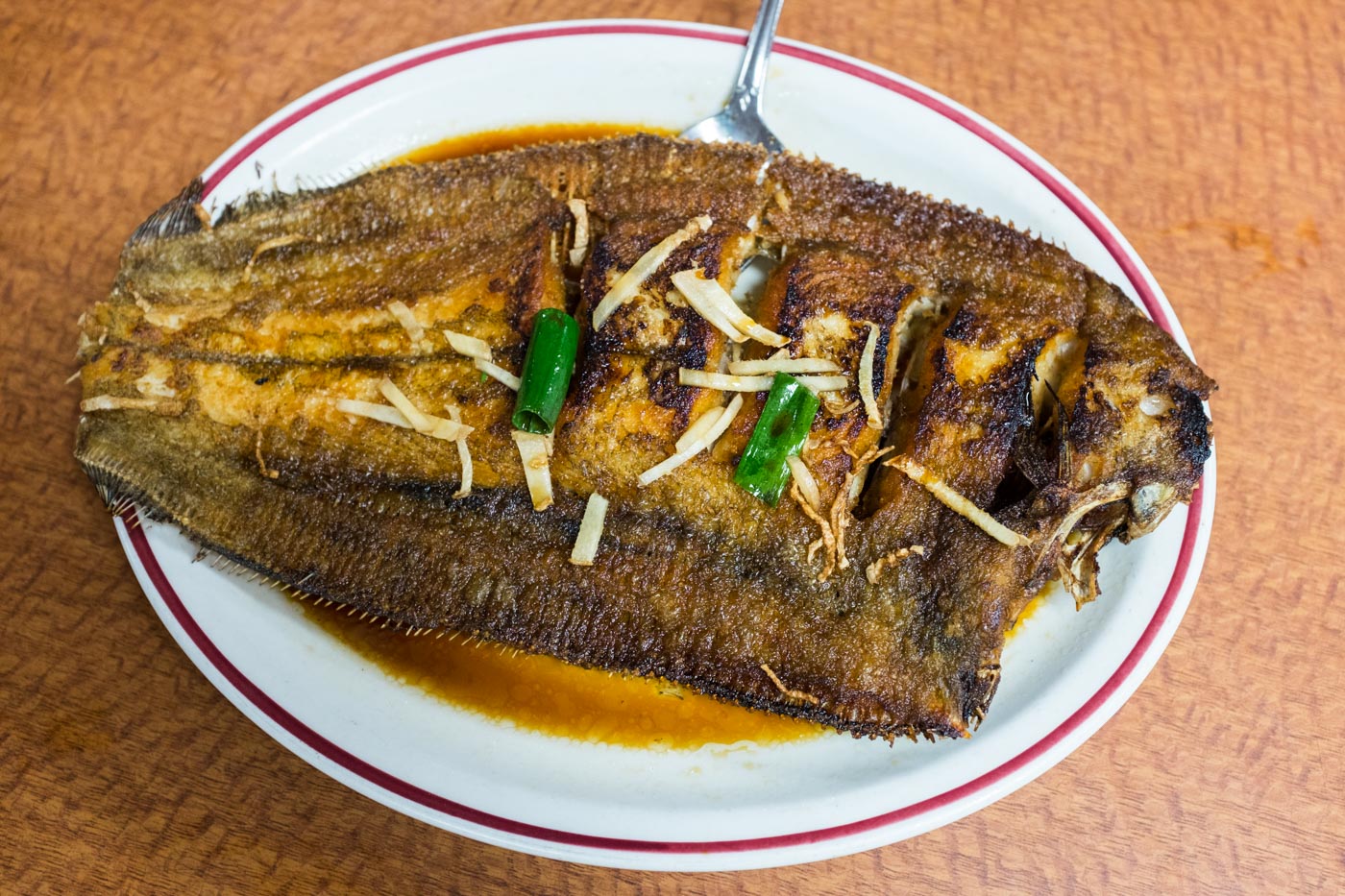
That refinement found in Hong Kong style restaurants is tangible in bakeries as well. We witness this firsthand at Fay Da—a local chain bakery—as we backtrack to Mott Street to find dessert. From the rear of the store, past the din of older locals gossiping and sipping milk tea, and the rest of the crowd who shuffle in trying to decide their orders aloud, Cheung directs me to the main display. There, we find five sections of individual glass cabinets consisting of four levels and totaling 40 tray’s worth of self-serve baked goods—the whole of which is taller than his five-foot-seven-inch frame, and as wide as ten feet across.
There’s more than enough to visually sort through—a few traditional choices like roast pork buns, but most are of a later vintage, like ham and corn buns, tuna fish buns, something called a “Danish twist” bread, knotted and studded with raisins. All of which the old Toisanese coffee shops—many without ovens that relied on steam, and frankly, were set in their ways long before many of these present choices were ever imagined—simply would never have offered.
With Cheung’s interest drawn to the coconut cream buns and the fried sesame balls, he continues his assessment. “This looks a lot more appealing and nicer than Mei Lei Wah. It’s a different feeling. Everybody was screaming, ‘Give me this. Give me that.’ Here, it looks better. It looks prettier. It’s more convenient.”
Cheung can point to a specific time—the 1980s—when changes began. “Maria’s Bakery was the alternative to those old Toisanese places,” Cheung says, referring to the since shuttered chain that swept into Chinatown thirty years ago, popularizing the now ubiquitous Hong Kong style bakeries that ultimately changed the game and struck a knockout blow to so many Toisanese coffee shops.
“Plus, the Toisanese ways were becoming outdated,” Cheung elaborates. “The owners were retiring, and the kids didn’t want to take over. A lot of them closed.”
Heading through the neighborhood again and snacking on his purchase as we walk, Cheung identifies places that are gone now—Joy Luck on Mott, Yuen Yuen on Bayard, New South Wind on Division. He makes a respectful stop where each would have been and, reminiscing, tells me about what he used to eat there.
“I’m so proud to be the last of a dying breed. So proud to have a place that is one of the last of its kind in the city,” Cheung says of himself and East Wind. “My main focus is to keep it on the authentic side and to be technically perfect, even though it’s a little bit different than what it used to be.” There’s a pause as if to gather a memory.
“I can’t make it exactly the way it used to be.” Cheung adds, his eyes embracing the words. “But, I’ve made it as nice as I can.”

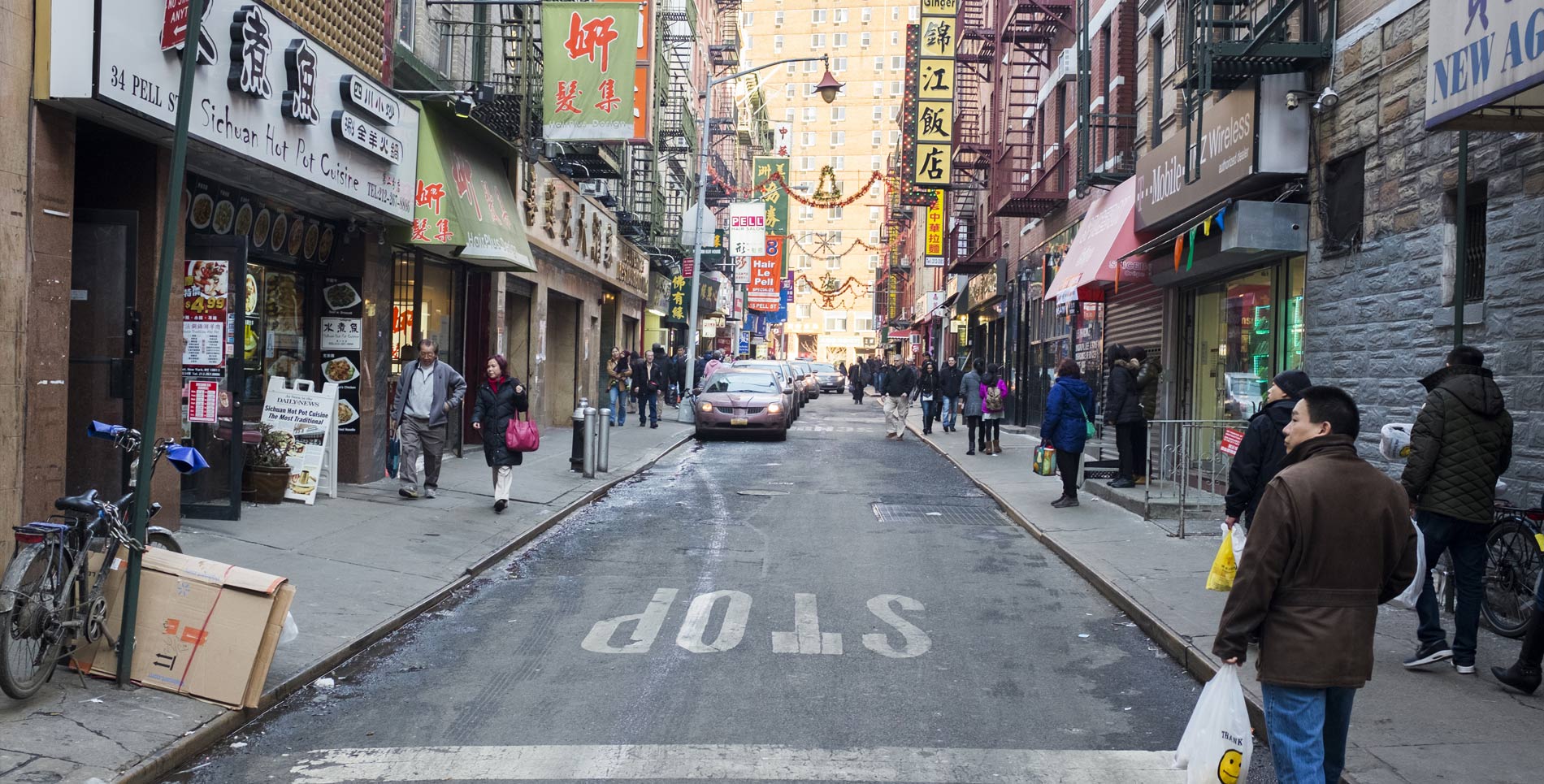

Our comments section is for members only.
Join today to gain exclusive access.